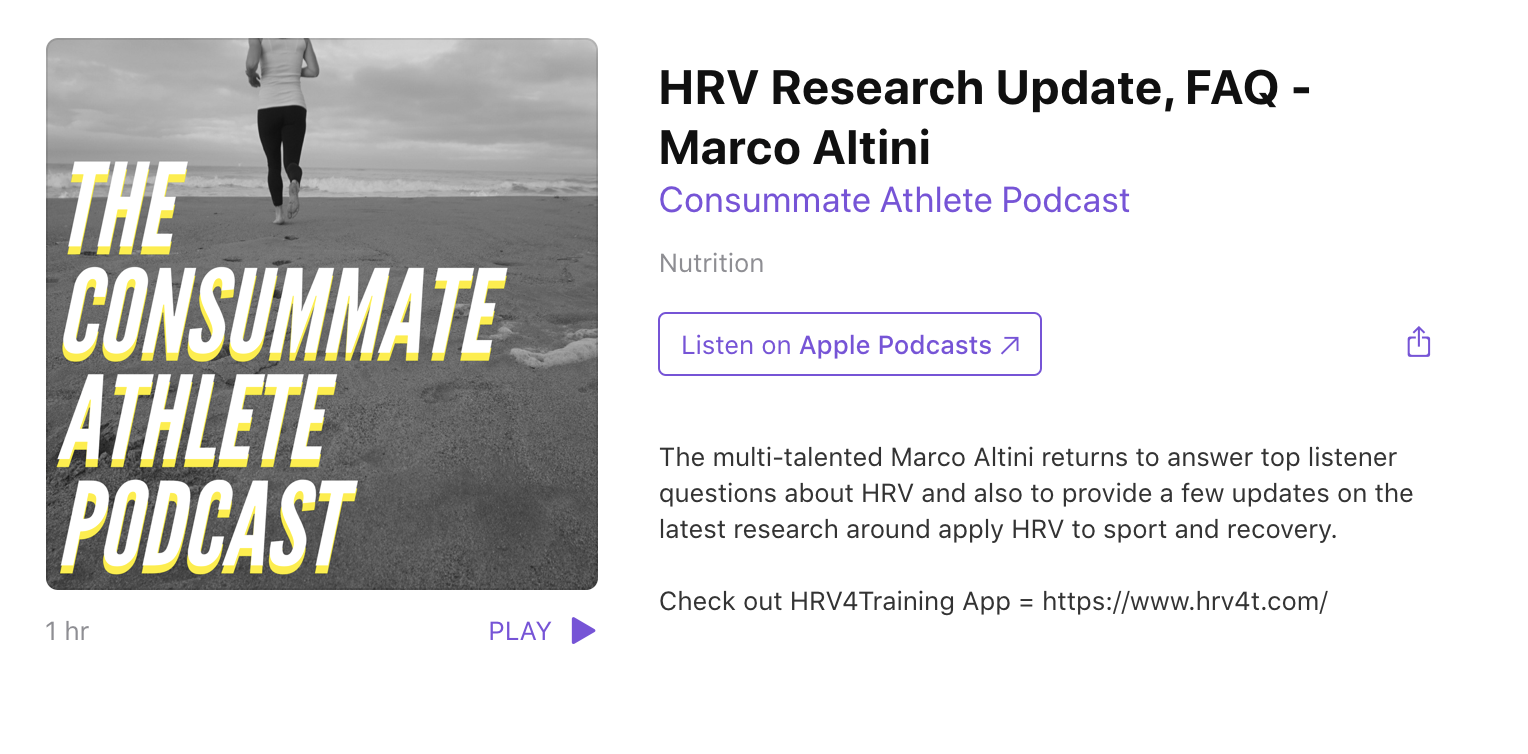|
Grazie mille Omar e Bikeitalia per questa intervista su HRV4Training e la variabilità cardiaca
Cos’è l’HRV? Come si misura? Quali sono i dati che dobbiamo considerare per monitorare il nostro allenamento? Come gestire al meglio lo stress dell’allenamento? Link qui. I was invited to Tampere university of technology for Julia Pietilä’s PhD defense where I had the honor to act as the “opponent”, according to Finnish protocol.
Julia did great work on HRV data and its relation to physical activity, sleep, alcohol intake and more (a few extra words on her work can be found below, while the full text of the thesis is available here). Special thanks to Ilkka Korhonen, who is (among other things) CTO at Firstbeat, a company I’ve always admired for the sound scientific approach. I’m grateful for the invitation and the opportunity to talk about my work and learn more about the research being done here. I really had a great time and it is always nice to find like minded people who understand the value of collaboration and research even when working in a similar business or addressing the same market. Here is a very brief overview of the thesis: In this thesis, a very large dataset comprising thousand of individuals and multiple days of data per individual were used to analyse the relationship between resting physiological parameters such as HRV and population level parameters (age, BMI, etc.) as well as acute stressors such as alcohol intake and physical activity. In particular, the thesis focused on methodological aspects linked to the use of large datasets collected in unsupervised conditions, and provides useful insights on various aspects. Most notably, on the difficulty of determining PA levels in relative and absolute manners, as well as on the impact of alcohol intake and PA on HRV and sleep quality. The work builds incrementally on what is known from smaller studies, validating the use of data collected in unconstrained free living settings for the analysis of PA, alcohol intake and sleep and then takes this further by exploring aspects that could hardly be investigated in regular clinical or more controlled studies. I believe an important contribution here is the analysis of the relation between acute bouts of PA, overall fitness or habitual PA, and HRV as a marker of both parasympathetic activity in response to acute stressors (in relative terms) but also as a marker of health and potentially of fitness. Another important contribution is certainly the analysis of the difference in terms of acute responses depending on individual characteristics, for example recovery time in terms of HRV in response to alcohol intake or PA, and how these aspects can depend on a person’s age or BMI. These are all aspects very difficult to analyse or extrapolate from published literature given the small sample size or limited data. This work is of great relevance at this time, as there seem to be a gap between the large amounts of data collected by digital health companies and the methods and studies carried out in controlled research settings where often just a few subjects take part in such studies. 🇮🇹 Piccola intervista per gli amici italiani sulla variabilità cardiaca e l'utilizzo di HRV4Training per il canale YouTube di Massi Milani (2 volte vincitore di categoria della maratona di New York)
Perchè è importante misurarla? quando va fatta la misura? come utilizzare i valori? a chi consigliamo utilizzare questa tecnologia? ▶️ Grazie Massi! In this series of posts, I’ll provide an overview of best practices for your Heart Rate Variability (HRV) measurements (part 1), and tips on how to analyze and interpret your data over the short and long term (response to acute stressors, longer-term trends, etc. — in part 2). I’ll include quite a few case studies so that you can clearly see how you can too make use of the data (in part 3). Finally, the last post will cover a few misconceptions (utility with respect to subjective scores, non-training related use, strength training, etc. — part 4).
HRV is nothing new, and fairly simple to use effectively, but poor standardization and methodological inconsistencies make it difficult sometimes for people to make good use of the technology or understand what is reported in the scientific literature. Hopefully, these posts will help, but please feel free to ask questions should you have any doubts. You can find the other parts of this series at these links:
Pretty stoked to see HRV4Training mentioned by Los Angeles Football Club on the Apple store
“a state-of-the-art training program that leverages two affordable, easy-to-use apps available to pros and amateurs alike. This might be part of why LAFC is also one of the most successful MLS teams” Huge thank you to Gavin Benjafield for his words and support of our work, and congratulations on a great season last year I've recorded a podcast with Peter Glassford at the Consummate Athlete. We talked about HRV research, and in particular: guidelines for measurements in team sports (morning vs facilities), training adaptation (positive responses to increased load), HRV-guided training (when to hold back to improve performance) and menstrual cycle (HRV changes during the different phases). Enjoy.  |
Marco ALtiniFounder of HRV4Training, Advisor @Oura , Guest Lecturer @VUamsterdam , Editor @ieeepervasive. PhD Data Science, 2x MSc: Sport Science, Computer Science Engineering. Runner Archives
May 2023
|





 RSS Feed
RSS Feed